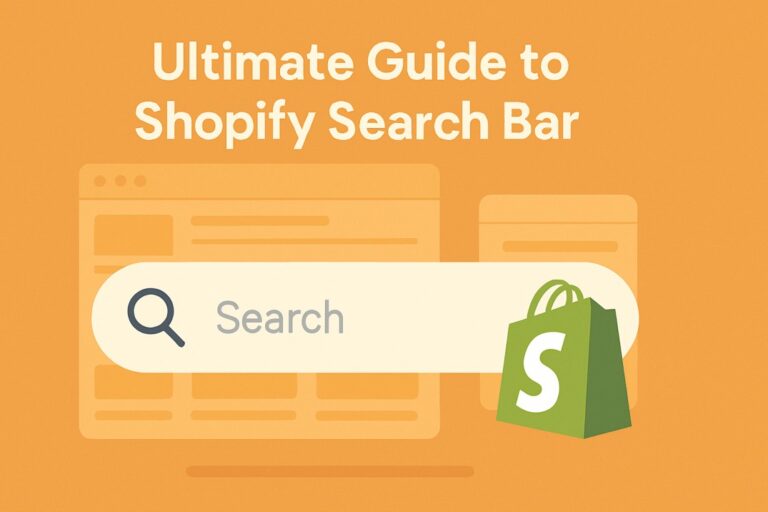Integrating PayPal into your online store offers customers a convenient and familiar payment option. You can enhance conversion rates and streamline the checkout process by enabling purchases through their own PayPal accounts. For countless individuals worldwide, PayPal symbolizes convenience and security. Hence, integrating PayPal with your online store can have a significant impact. In this post, we will delve into the details of integrating PayPal with Shopify, drastically improving your ecommerce site’s user experience.

Benefits of PayPal Integration in Shopify Business
When you connect PayPal to Shopify, you simplify the payment process for your clients. Moreover, due to PayPal’s recognition and reliability as a payment gateway, users have confidence in it and are more likely to make transactions.
Additionally, you will enjoy the following benefits:
- Building trust in your store: Connecting a trustworthy payment service can strengthen potential customers’ trust in your business, increasing both conversion rates and customer loyalty.
- Multi-Currency support: PayPal operates in over 200 countries and supports 25 currencies, allowing you to accept transactions worldwide. This expands your business’s reach and potential for scaling.
- Frictionless payments with PayPal on Shopify: By integrating PayPal’s Express Checkout feature, buyers can make payments without entering their contact details and delivery address. This reduces order placement time and decreases the likelihood of order rejection.
- Flexible payment options: By activating the Pay in 4 option, your site visitors can opt to pay for purchases in installations. This can encourage them to order more and increase the average order value.
- Instant updates: Shopify’s integration with PayPal enables seamless management and rapid updates for product listings. Pricing adjustments and discounts can be easily made in Shopify, automatically reflecting changes in PayPal. Simplifying store management has never been easier.
- Seller and buyer protection: PayPal has developed its own mechanism to protect both sellers and buyers during disputes or problematic transactions, facilitating negotiation and preventing issues.
- Abandoned cart recovery: Dealing with abandoned carts is a frequent obstacle in e-commerce. Shopify and PayPal tackle this problem with a streamlined, secure, and fast checkout process. By reducing the number of steps to complete a purchase and instilling trust with PayPal, you can expect a decrease in cart abandonment rates.
- Friendly mobile interface: Customers frequently use their mobile devices for shopping, and a cumbersome payment process may result in lost sales. With Shopify PayPal integration, you can optimize your product listings and payment process for mobile, ensuring a smooth shopping experience regardless of the device customers use.
- PayPal Express Checkout: Shopify offers an additional option, PayPal Express Checkout, alongside the standard PayPal integration. This feature enhances the checkout experience, allowing customers to complete their purchases directly through their PayPal account, bypassing the traditional checkout process. By enabling PayPal Express Checkout, you can reduce cart abandonment rates, improve customer satisfaction, and make your online store stand out.
Ultimately, you can achieve boost conversions with Paypal on Shopify. All of the benefits listed work to boost Shopify sales with PayPal, and also help with reporting and analysis. But the most important argument is PayPal safe, which is at a very high level. But not everything is so simple here and you should better understand whether PayPal is safe and whether there are any threats. Ideally, a business should take additional security measures.
How to Setup PayPal for the Shopify Store?
To set up PayPal on your Shopify store, follow these steps:
- Automatic Account Creation: When you create your Shopify store, an email linked to your store is used to automatically create a PayPal Express Checkout account. Make sure that this email is also associated with your business PayPal account. If not, add it to your existing account or create a new business account.
- Activating the Account: If you haven’t conducted any transactions through PayPal yet, log in to your PayPal account and grant Shopify permission to handle transactions on your behalf. Ensure that your PayPal account is a business account to access essential tools for merchants.
- Customizing the Checkout Experience: Adjust your PayPal settings to allow customers without PayPal accounts to use their credit cards for transactions. Enable guest payments to enhance the checkout experience.
- Mandatory Information Alignment: Align the required field settings in both PayPal and Shopify checkouts to refine the checkout process. For example, if you require phone numbers on the Shopify checkout, ensure that it is also a requirement in PayPal Express checkout.
- Dealing with Subscriptions and Automatic Billing: For stores that manage service subscriptions or automatic billing, Shopify requests approval for PayPal’s Reference Transactions. This feature enables automatic charging of customers post-approval.
- Testing and Debugging: Before launching your store, conduct a transaction test to ensure everything functions properly. Create a test product and complete the transaction process to catch any potential errors at an early stage.
Test Your PayPal Integration on Shopify

Before you go live with your PayPal integration, it is essential to test the integration to ensure that everything functions as expected. Shopify offers a sandbox mode that allows you to simulate transactions without processing actual payments. To test your PayPal integration, follow these steps:
- Log in to your Shopify admin panel.
- Navigate to the “Settings” tab and select “Payments” from the dropdown menu.
- Under the “Accept Payments” section, locate the PayPal option.
- Click on “Manage” to access the PayPal payment settings.
- Enable the option for “Sandbox mode.”
- Proceed to create test orders for simulating transactions and verifying the correct functioning of the payment process.
Conclusion
When you add PayPal as a payment option to your Shopify-powered store, you’re lending to its reputation and making the purchasing process easier for customers. Fast, simple, and reliable payment using a world-renowned payment service cannot go unnoticed. Customers will thank your store for their purchases, so you can expand your customer base. Another key argument in favour of this action is easy management and reporting with PayPal.




